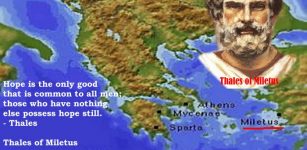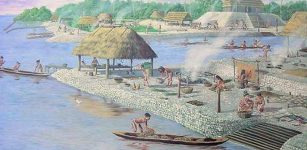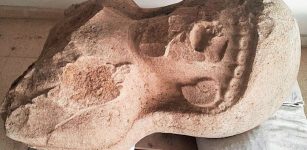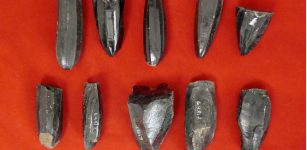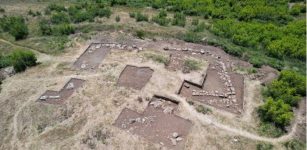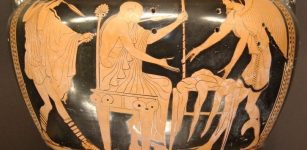Neanderthal Extinction May Have Been Caused By Sex, Not Fighting – New Study Suggests
Jan Bartek - AncientPages.com - A new paper proposes that Homo sapiens may have been responsible for the extinction of Neanderthals not by violence, but through sex instead.
Making love, not war, might have been responsible for putting the Neanderthals on a path to extinction.
Credit: Adobe Stock - Gorodenkoff
While about 2% of the genome of all living people from outside Africa is derived from Neanderthals, there is very little evidence that this process went the other way.
A new paper, published in the journal PalaeoAnthropology, raises the prospect that interbreeding with our ancestors would have reduced the number of Neanderthals breeding with each other, leading to their eventual extinction.
Though only 32 Neanderthal genomes have been sequenced to date, leaving it possible that the lack of Homo sapiens DNA in their genome is actually a quirk of sampling, the authors hope advances in DNA sequencing technology will be able to resolve this hypothesis by making more genomes available.
Professor Chris Stringer, the Museum's Research Leader in Human Evolution, authored the new paper alongside colleague Dr. Lucile Crété.
Chris says, "Our knowledge of the interaction between Homo sapiens and Neanderthals has got more complex in the last few years, but it's still rare to see scientific discussion of how the interbreeding between the groups actually happened."
"We propose that this behavior could have led to the Neanderthals' extinction if they were regularly breeding with Homo sapiens, which could have eroded their population until they disappeared."
The first encounters of Neanderthals and Homo sapiens
Neanderthals and Homo sapiens diverged from each other around 600,000 years ago and evolved in very different areas of the world.
Fossils of Neanderthals have been found across Europe and Asia, reaching as far as southern Siberia. It is believed they spent at least 400,000 years evolving in this environment, adapting to a predominantly cooler climate than is found today.
Meanwhile, the ancestors of our own species evolved in Africa. It is currently uncertain whether Homo sapiens are the direct descendants of one group of ancient African hominins or are the result of mixing between different groups spread across the continent.
From genetic data, it looks like the two species first encountered each other when Homo sapiens began making occasional forays out of Africa about 250,000 years ago.
"Without knowing exactly what Neanderthals looked or behaved like, we can only speculate what Homo sapiens would have thought of their relatives," Chris says.
"The language differences would probably have been greater than we could imagine, given the time depth of the separation, and would have been much larger than those between any modern languages."
The language barrier may have been reinforced by the individual attributes of both species, with comparisons of Neanderthal and Homo sapiens suggesting that the brains and vocal apparatus of the species were different.
The genomes of Neanderthals also show that almost 600 genes were expressed differently between our species and theirs, particularly those associated with the face and voice.
Another prominent difference would have been the forehead, with Neanderthals possessing a prominent brow ridge that could have been used for social communication.
However, the signals these ridges were trying to convey could well have been lost on our ancestors. Some studies suggest that reduced brow ridges allowed Homo sapiens to turn instead to the eyebrows to convey a range of subtler, temporary signals.
In any event, these encounters eventually led to breeding between both species, but exactly how this occurred is also shrouded in mystery.
Neanderthal and Homo sapiens interbreeding
We know that our species interbred with Neanderthals since our relatives' first genomes were sequenced.
However, the Neanderthal genes we have in us today are not the result of these early sporadic interactions Homo sapiens had when they first left Africa. Instead, they come from the much larger migrations that modern humans undertook around 60,000 years ago.
Interbreeding at this time may have been the result of mutual courtship or could have been less friendly. Encounters between separate groups of our closest living relatives, chimpanzees, show evidence of both behaviors.
Whether or not interbreeding was successful appears to depend on the exact pair that was breeding. So far there is no evidence of Homo sapiens genetics in Late Neanderthal genomes dating to between 40–60,000 years ago.
Neanderthalian (Homo neanderthalensis) skulls from three different periods, at the Natural History Museum in London, England. Credit: Emoke Dénes - CC BY-SA 4.0
It is possible this is due to the process of hybridization itself, as some species are only capable of producing offspring in certain directions. For instance, pollen from the Capsella rubella plant can successfully fertilize Capsella grandiflora seeds, but not the other way around.
The lack of mitochondrial DNA, which is inherited through females, from Neanderthals in living humans has been suggested as evidence that only male Neanderthals and female Homo sapiens could mate, but there is also some evidence that male hybrids may have been less fertile than females.
With fewer Neanderthals breeding with each other and group sizes already small and scattered due to the environment, hybridization outside of Neanderthal family groups could have helped push the species into decline. At the moment, however, there isn't enough evidence to decide either way.
"We don't know if the apparent one-way gene flow is because it simply wasn't happening, that the breeding was taking place but was unsuccessful, or if the Neanderthal genomes we have are unrepresentative," Chris says.
See also: More Archaeology News
"As more Neanderthal genomes are sequenced, we should be able to see whether any nuclear DNA from Homo sapiens was passed on to Neanderthals and demonstrate whether or not this idea is accurate."
Future research could also investigate similar questions relating to another hominin species known as the Denisovans, giving us a greater idea of how our species interacted with its closest relatives.
The study was published in PaleoAnthropology
Written by Jan Bartek - AncientPages.com Staff Writer



